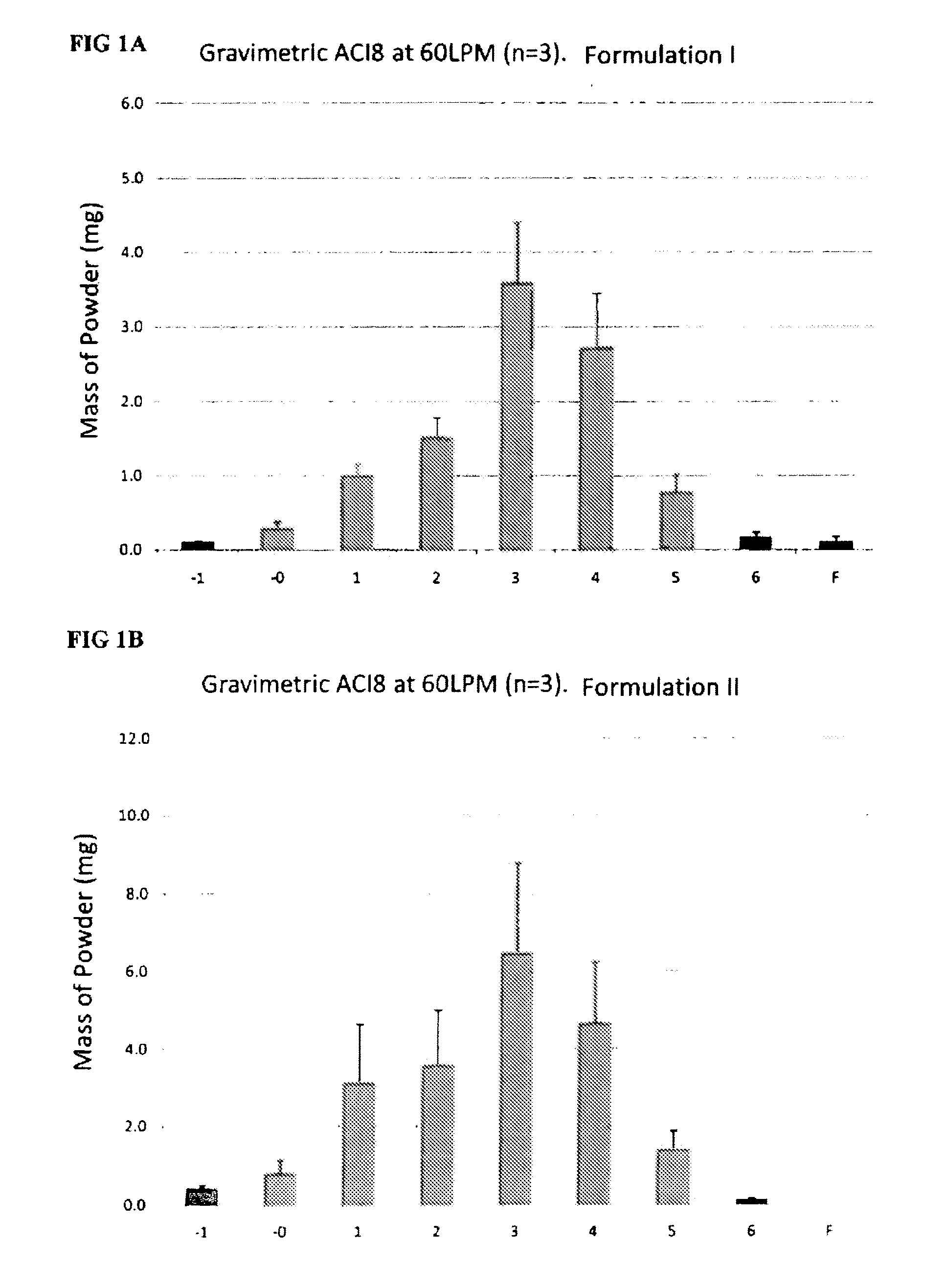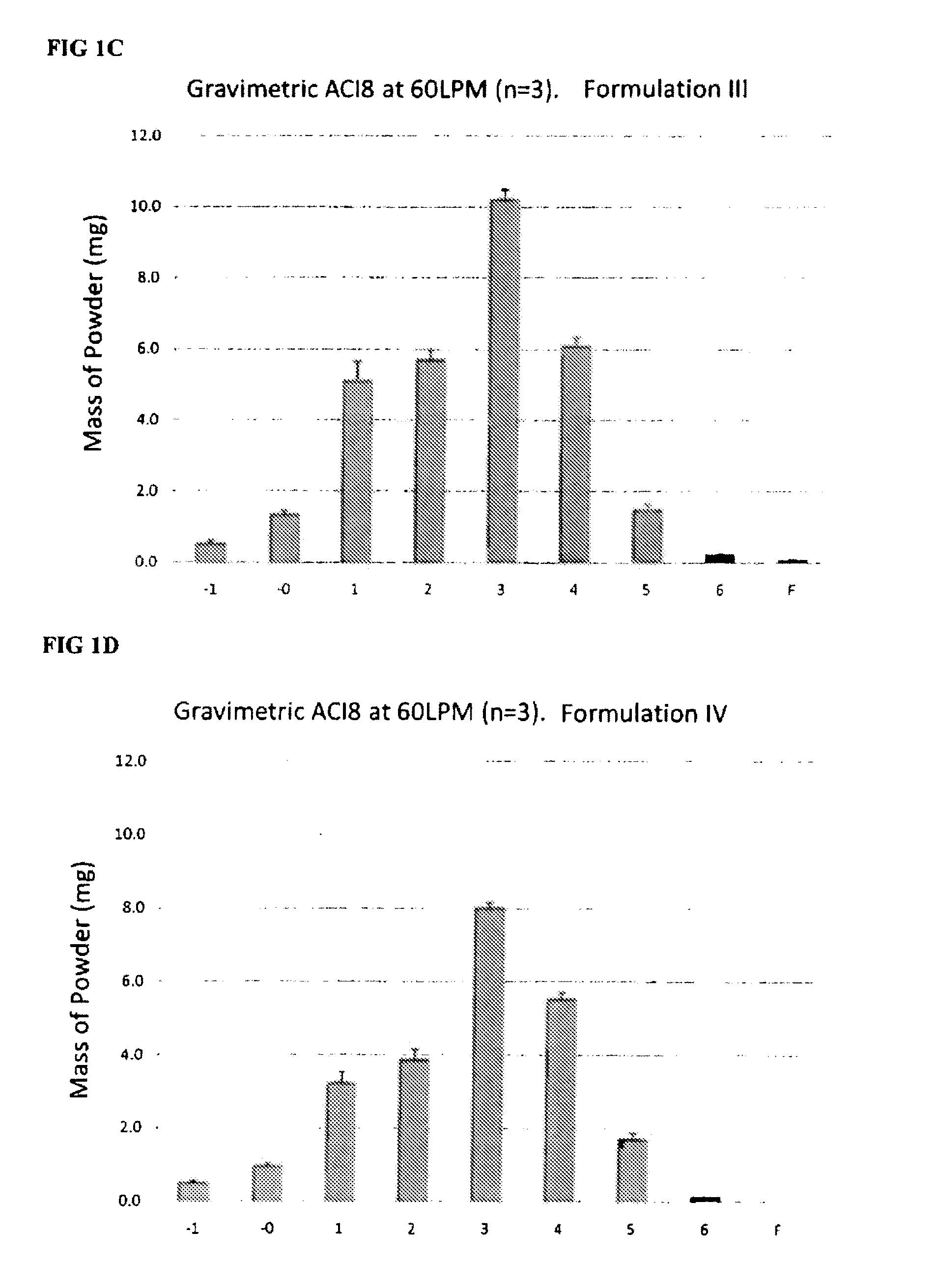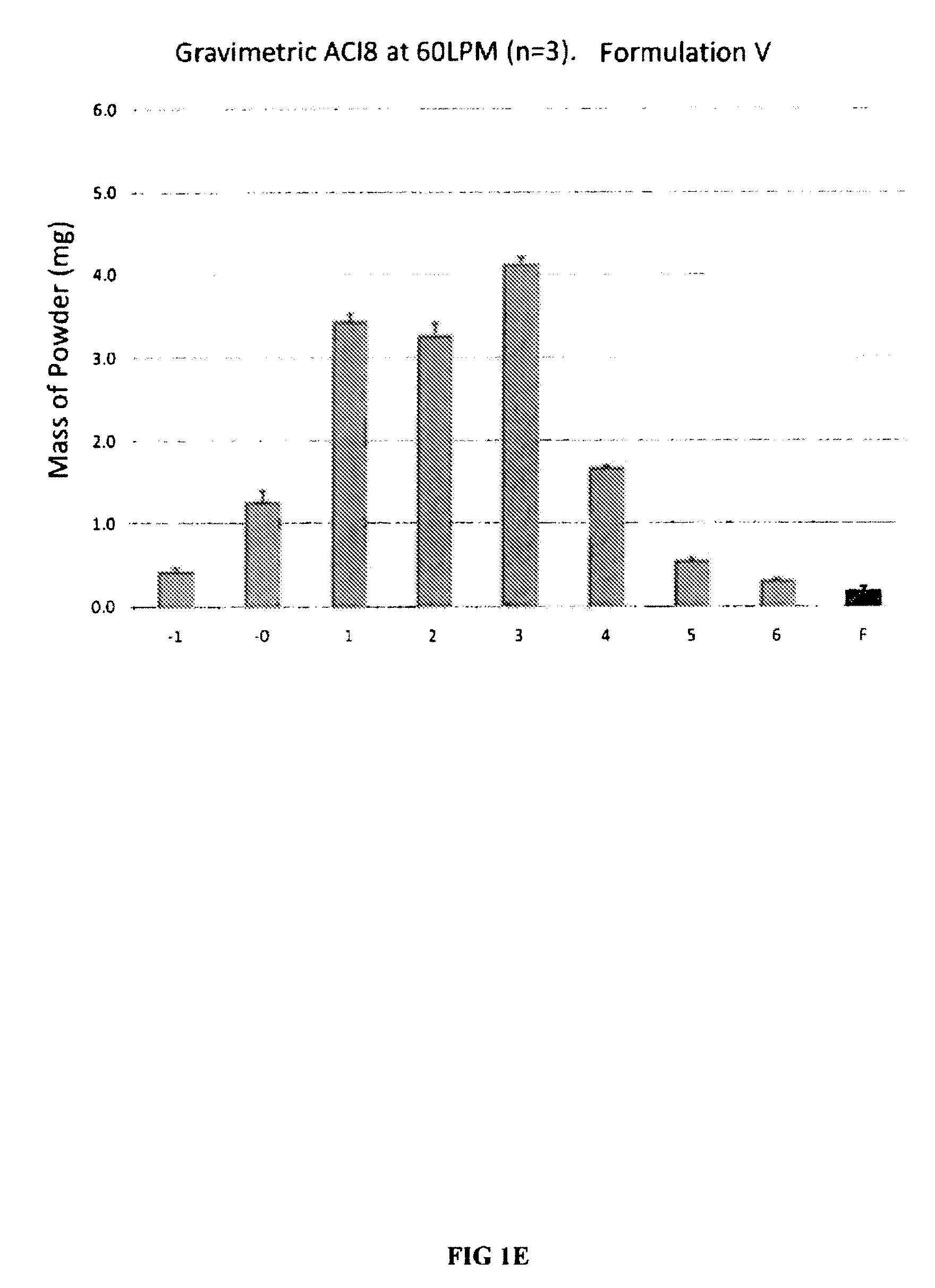Cationic dry powders
a technology of cationic dry powder and cationic acid, which is applied in the direction of biocide, inorganic non-active ingredients, drug compositions, etc., can solve the problems of low pressure at the exit region, lack of uniform size of liquid aerosol droplets, and inability to reliably deliver drugs to the upper and middle airways
- Summary
- Abstract
- Description
- Claims
- Application Information
AI Technical Summary
Benefits of technology
Problems solved by technology
Method used
Image
Examples
example 1
Production and Characterication of Divalent Cationic Powders
[0290]Several powders of the invention were produced by spray drying homogenous particles. The composition of these powders is shown in Table 1.
TABLE 1Composition of divalent cation dry powders.%%Additional%SaltExcipientcomponentAdditionalloadload(e.g., drug,componentFormSalt(w / w)Excipient(w / w)2nd salt)load (w / w)IMagnesium5N / A0albuterol95sulfateIICalcium7Maltodextrin43ciprofloxacin50sulfateIIIMagnesium15Maltodextrin35tobramycin50sulfateIVCalcium40Maltodextrin10ciprofloxacin50sulfateVMagnesium58.3Leucine37.5Sodium4.2lactatechlorideVIMagnesium9Maltodextrin90.9Tiotropium.113lactatebromide(TioB)VIIMagnesium10Mannitol90N / AN / AlactateVIIIMagnesium10Maltodextrin90N / AN / AlactateIXMagnesium10Leucine90N / AN / AsulfateXMagnesium10Leucine90N / AN / Alactate
[0291]Materials used in the following Examples and their sources are listed below. Calcium sulfate dihydrate, magnesium lactate, magnesium sulfate, sodium chloride, L-leucine, maltodextrin, a...
example 2
Dispersibility of Divalent Cationic Dry Powder
[0305]This example demonstrates the dispersibility of dry powder formulations when delivered from a dry powder inhaler over a range of inhalation flow rates and volumes.
[0306]The dispersibility of various powder formulations was investigated by measuring the geometric particle size distribution and the percentage of powder emitted from capsules when inhaling on a dry powder inhaler with flow rates representative of patient use. The particle size distribution and weight change of the filled capsules were measured for multiple powder formulations as a function of flow rate and inhaled volume in a passive dry powder inhaler.
[0307]Powder formulations were filled into size 3 HPMC capsules (V-Caps, Capsugel) by hand with the fill weight measured gravimetrically using an analytical balance (Mettler Toledo X5205). Fill weights of 20 mg were filled for Formulations I and V. A capsule-based passive dry powder inhaler (RS-01 Model 7, High Resistanc...
example 3
Aerodynamic Particle Size
[0310]This example demonstrates that the aerodynamic size distribution of dry powder formulations comprised in part of divalent cationic salts, when delivered from a dry powder inhaler, is in a range appropriate for deposition in the respiratory tract.
[0311]The aerodynamic particle size distributions of five powder formulations were measured by characterizing the powders with an eight stage Anderson cascade impactor (ACI). Powder formulations were filled into size 3 HPMC capsules (V-Caps, Capsugel) by hand with the fill weight measured gravimetrically using an analytical balance (Mettler Toledo XS205). Fill weights of 20 mg were filled for Formulations I and V, and fill weights of 50 mg were filled for Formulations II, III and IV. A reloadable, capsule-based passive dry powder inhaler (RS-01 Model 7, High Resistance, Plastiape, Osnago, Italy) was used to disperse the powder into the cascade impactor. One capsule was used for each measurement, with two actuat...
PUM
| Property | Measurement | Unit |
|---|---|---|
| Length | aaaaa | aaaaa |
| Fraction | aaaaa | aaaaa |
| Fraction | aaaaa | aaaaa |
Abstract
Description
Claims
Application Information
 Login to View More
Login to View More - R&D
- Intellectual Property
- Life Sciences
- Materials
- Tech Scout
- Unparalleled Data Quality
- Higher Quality Content
- 60% Fewer Hallucinations
Browse by: Latest US Patents, China's latest patents, Technical Efficacy Thesaurus, Application Domain, Technology Topic, Popular Technical Reports.
© 2025 PatSnap. All rights reserved.Legal|Privacy policy|Modern Slavery Act Transparency Statement|Sitemap|About US| Contact US: help@patsnap.com



